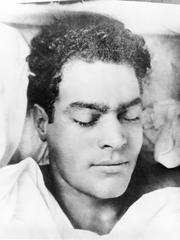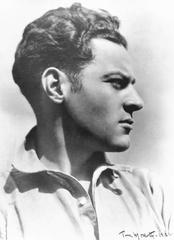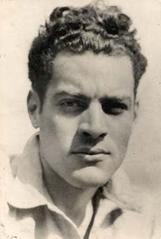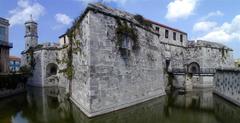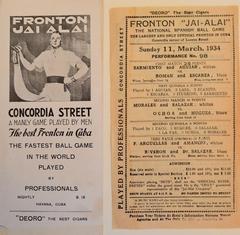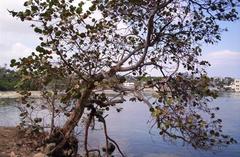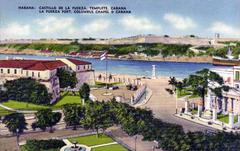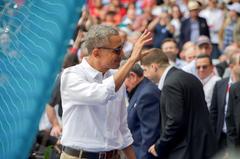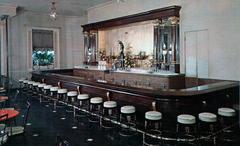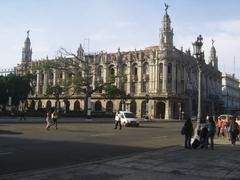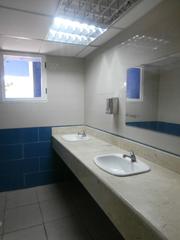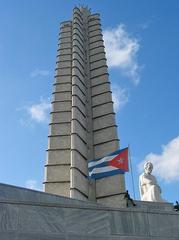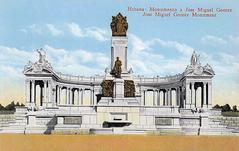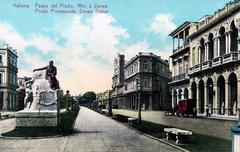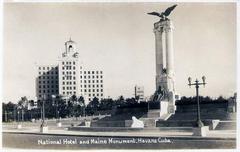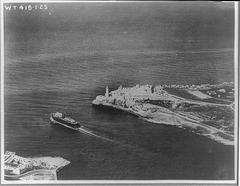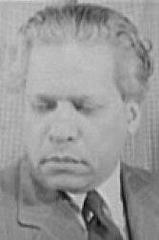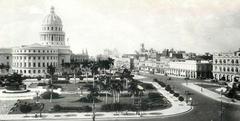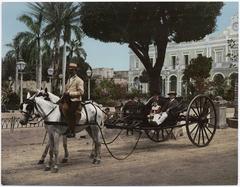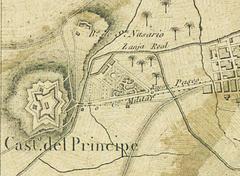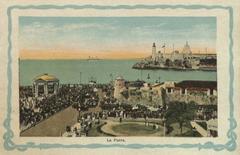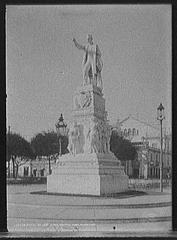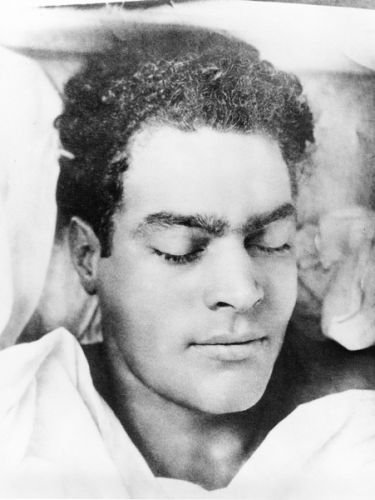
Julio Antonio Mella Memorial: Visiting Hours, Tickets, and Havana Historical Sites Guide
Date: 14/06/2025
Introduction: The Historical and Cultural Significance of the Julio Antonio Mella Memorial
The Julio Antonio Mella Memorial, located throughout Havana Province, is a powerful tribute to one of Cuba’s most influential revolutionary figures. Mella—a student leader, founder of the Federación Estudiantil Universitaria (FEU), and co-founder of the Cuban Communist Party—remains a symbol of youthful activism, anti-imperialism, and social justice. His legacy is commemorated at several sites: the rural memorial near Caimito, the monument in the town of Julio A. Mella, and the iconic memorial at the University of Havana. These locations offer visitors rich insight into Cuban revolutionary traditions and the enduring spirit of resistance that shapes national identity.
The memorials are open to all, with free admission and accessible visiting hours. They serve not only as historical landmarks but as living cultural centers, frequently hosting events, lectures, and commemorations. This guide provides essential information for planning your visit, including site locations, transportation, visiting hours, accessibility, nearby attractions, and practical travel tips. Whether you’re a history enthusiast, a student, or a curious traveler, the Julio Antonio Mella Memorial offers an immersive journey into Cuba’s revolutionary past (Visiting the Julio Antonio Mella Monument, Julio Antonio Mella Memorial in Havana Province, Monumento a Julio Antonio Mella in Havana).
Table of Contents
- Introduction: Why Visit the Julio Antonio Mella Memorial?
- History of Julio Antonio Mella and the Memorial
- Location and Directions
- Description of the Memorial
- Visiting Hours and Ticket Information
- Accessibility and Onsite Facilities
- Guided Tours and Visitor Experience
- Nearby Attractions and Cultural Sites
- Travel Tips and Practical Information
- Cultural and Educational Importance
- Safety Considerations
- Frequently Asked Questions (FAQ)
- Conclusion: Experience Cuban History at the Julio Antonio Mella Memorial
Why Visit the Julio Antonio Mella Memorial?
Visiting the Julio Antonio Mella Memorial is an opportunity to connect with Cuba’s revolutionary heritage and understand the pivotal role of youth activism in the nation’s history. The memorials honor Mella’s life and ideals, providing a meaningful experience for those interested in Cuban society, history, and culture.
History of Julio Antonio Mella and the Memorial
Julio Antonio Mella (1903–1929) was a prominent student activist, journalist, and Marxist leader. He co-founded the FEU in 1922 and, in 1925, the original Cuban Communist Party. Exiled to Mexico for his activism, Mella continued his revolutionary work until his assassination in 1929, which is widely attributed to agents of Cuban dictator Gerardo Machado. His death cemented his status as a martyr for Cuba’s leftist and youth movements.
The memorials dedicated to Mella serve as sites of remembrance and education, hosting annual commemorations and acting as focal points for civic engagement (Wikipedia, CubaSí).
Locations and How to Get There
1. Rural Memorial in Caimito, Havana Province
- Address: Municipality of Caimito, Havana Province, Cuba
- Coordinates: 22.9833° N, 82.5833° W
- Getting There: Approximately 40 km southwest of central Havana, accessible via the Carretera Central highway. While public transport is limited, taxis or organized tours from Havana are recommended. The site is well signposted, and local guides are familiar with the location.
2. Town of Julio A. Mella
- Address: Town of Julio A. Mella, Havana Province
- Access: Reachable by car or local buses from Havana city center; parking is available near the site.
3. University of Havana Memorial
- Address: Calle L, corner with San Lázaro, Vedado, Havana (TripCuba)
- Access: Easily reached by taxi, public bus, or on foot from Vedado or Centro Habana.
Description of the Memorials
- Monumental Sculptures and Busts: Striking bronze representations of Mella, inscribed with his quotes.
- Mausoleum: The rural memorial houses Mella’s remains and is often decorated with flowers and wreaths.
- Commemorative Wall: Bas-reliefs depict key moments in Mella’s revolutionary career.
- Landscaped Plazas: Native Cuban flora, benches, and shaded areas for reflection.
- University Site: The memorial at the University of Havana sits at the foot of the grand staircase, a popular gathering spot and location for student ceremonies (Cuban Travel Agency).
Visiting Hours and Ticket Information
- Rural Memorial (Caimito): Open daily from 9:00 AM to 5:00 PM. Admission is free; donations are welcome.
- Town of Julio A. Mella Monument: Open daily from 9:00 AM to 6:00 PM. Free entry.
- University of Havana Memorial: Open-air monument accessible at all times; no tickets required.
- Nearby Museums (e.g., Felipe Poey, Montané Anthropology Museum): Usually open Monday to Friday, 9:00 AM–12:00 PM and 1:00 PM–4:00 PM, September through July. Entry fee: 1 CUC (TripCuba).
Accessibility and Facilities
- All major sites offer paved paths and ramps, suitable for wheelchair access.
- Restrooms and small cafés are available near the rural memorial and university campus.
- The University of Havana site is at street level, but the grand staircase behind the memorial is not wheelchair accessible.
Guided Tours and Visitor Experience
- Self-Guided Visits: Permitted at all locations.
- Guided Tours: Highly recommended for historical context; available via local agencies or onsite. Spanish is the main language, but English-speaking guides can be arranged in advance.
- Commemorative Events: Held on key dates such as January 10 (Mella’s death anniversary) and July 26 (Day of the National Rebellion).
Nearby Attractions and Cultural Sites
- University of Havana: Explore the neoclassical campus and Alma Mater statue.
- Museums: Felipe Poey Natural History Museum and Montané Anthropology Museum.
- Vedado District: Known for eclectic architecture, nightlife, and cultural venues.
- Local Markets and Eateries: Experience authentic Cuban cuisine in Caimito and Vedado.
- Callejón de Hamel: Hub for Afro-Cuban culture and art.
- Gran Teatro de la Habana Alicia Alonso, Capitolio Nacional, Malecón: Iconic sites within a short distance (Lonely Planet).
Travel Tips and Practical Information
- Best Time to Visit: Early mornings or late afternoons for cooler temperatures and fewer crowds; November–April is the dry season.
- Transportation: Taxis and organized tours are most convenient; public buses are available but may be crowded.
- What to Bring: Water, sun protection, comfortable shoes, and a phrasebook or translation app.
- Dress Code: Casual, comfortable clothing; modest attire is appreciated in university buildings.
- Conduct: Respectful behavior is expected, especially near the mausoleums and during ceremonies.
Cultural and Educational Importance
The Julio Antonio Mella Memorial is not only a site of historical memory but also a hub for civic education and cultural activities. Events include lectures, workshops, exhibitions, and artistic performances, especially on national holidays and commemorative dates. The memorial continues to serve as a focal point for youth organizations and student activism.
Safety Considerations
Havana and its suburbs, including Vedado and Caimito, are generally safe for tourists. Police and university security are present, especially during events. Standard precautions apply: be mindful of petty theft in crowded areas and avoid isolated spots after dark.
Frequently Asked Questions (FAQ)
Q: What are the visiting hours for the Julio Antonio Mella Memorial and monuments?
A: Sites are generally open daily from 9:00 AM to 5:00 or 6:00 PM. The University of Havana memorial is accessible at all times.
Q: Is there an entrance fee?
A: Admission to all memorials is free; small fees apply for nearby museums.
Q: Are guided tours available?
A: Yes, they can be arranged onsite or through travel agencies; English-speaking guides are available with prior booking.
Q: Are the sites wheelchair accessible?
A: Most memorials and plazas are accessible, but some university areas have stairs.
Q: Is photography allowed?
A: Yes, but be respectful during ceremonies and when photographing people.
Visuals and Media
- Images: Find photos of the memorials and monuments on official Cuban tourism sites and reputable travel guides.
- Virtual Tours: Interactive maps and virtual tours are available through Cuban cultural institutions online.
Summary and Recommendations
A visit to the Julio Antonio Mella Memorial is a profound way to engage with Cuba’s revolutionary past and present. The memorials’ accessibility, free admission, and educational programming make them ideal for a wide range of visitors. Pair your visit with nearby cultural and historical sites, and consider guided tours for a deeper understanding of Mella’s enduring legacy. For the best experience, use interactive maps, consult local guides, and download the Audiala app for event updates and personalized recommendations (Visiting the Julio Antonio Mella Memorial, Julio Antonio Mella Monument Guide, Monumento a Julio Antonio Mella in Havana).
References
- Visiting the Julio Antonio Mella Monument: History, Hours, and Travel Tips
- Visiting the Julio Antonio Mella Memorial in Havana Province: Hours, Tickets, History, and Travel Tips
- Julio Antonio Mella Memorial Visiting Hours, Tickets & Tips for Havana Historical Site
- Monumento a Julio Antonio Mella in Havana: Visiting Hours, Tickets, and Cultural Insights for Tourists
- Wikipedia: Julio Antonio Mella
- CubaSí: Julio Antonio Mella
- Cubadebate coverage of Mella commemorations
- GPSmyCity: Julio Antonio Mella Theater
- PlanetWare: Havana Attractions
